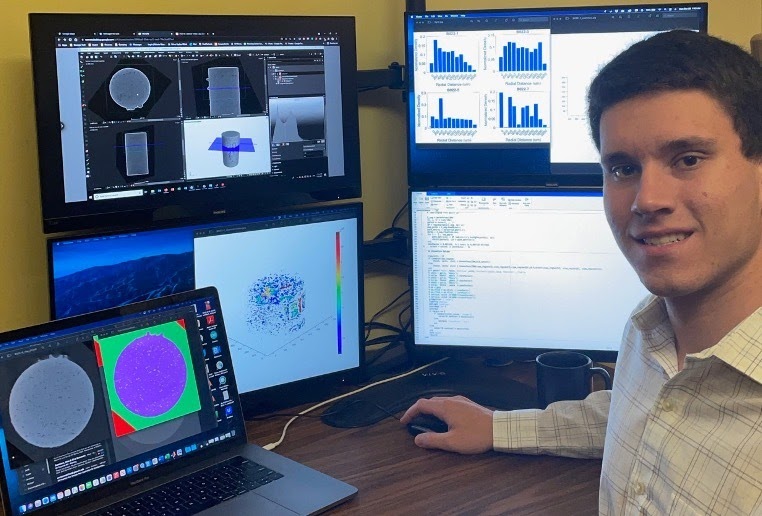This month, we’re reviving a series of articles we started last year: RoboResearch. RoboResearch seeks to highlight students in RoboJackets that participate in research outside of RoboJackets, be it robotics research or otherwise. We’re also interested in hearing how their experiences at RoboJackets help them in their research. This month, we’ll be featuring Tan Gemicioglu and Daniel Johnson.
First up is Tan Gemicioglu. Tan is the current Vice President of RoboJackets and works most often on RoboNav. They work with Professor Thad Starner in the Contextual Computing Group, focused on interfaces for wearable computing devices. This is their 4th semester with the lab. Tan got their start with a project called Silentspeller. Tan describes it as “a silent speech interface using a device that goes onto the upper palate … to detect what is being said by the user. This helps a lot as a privacy-protecting alternative to speech recognition.” The project they’ve been working on most recently is “vibrotactile gloves that passively assist with learning piano and a brain-computer interface using attempted movement to enable communication for people with movement disabilities.”
A watermelon being used as a noise baseline for the Brain-Computer Interface
We also asked Tan what skills from RoboJackets they brought with them to research. Here’s what they had to say:
While we work on people rather than robots, both my technical skills and soft skills from RJ translate very well. We often need to prototype our own hardware for the devices we make and then make sure that our software can be used in real-time. Knowing how to manage people who might have different skill sets is also critical to my work in the lab, since I help newer students in the lab get acclimated.
Next is Daniel Johnson. In RoboJackets, Daniel is the bot lead for Bucki in Battlebots, and is also the mechanical core chair. Daniel does research under Dr. Christopher Saldana in the Enhanced Preparation for Intelligent Cybermanufacturing Systems (EPICS) research team. Daniel’s projects are focused on “manufacturing optimal geometries for lattice structures using laser powder bed fusion (LPBF) additive manufacturing.” LPBF as a technique is similar to other powder- or resin-based 3D printing, in which a workpiece is fused from a vat of material into a 3D object with the specified geometry. He uses computed tomography data (in medical applications, often called CAT scans) “to inspect and study the geometries manufactured and establish quality metrics, occasionally performing mechanical testing to assess relationship between manufacturing defects and structural performance.” This entails “developing algorithms and processes to visualize and analyze CT data of LPBF components as a way to create an efficient and accurate non-destructive evaluation workflow.”
Here’s what Daniel had to say about the skills he brings from RoboJackets to his research:
My experience in RoboJackets has equipped me with essential skills when it comes to working on a team to solve a common problem. Designing battlebots has enhanced my ability to develop creative, abstract ideas and resolve individual contributions of team-members into a global team solution. This experience has prepared me to dynamically function with my research group, allowing me to make meaningful contributions to the group effort.
Volume Graphics segmentation and analysis of CT data from a LPBF manufactured 316L stainless steel sample
This shows a 3D distribution of pores color coded by volume. This graph was generated from the CT images shown in the other photo

